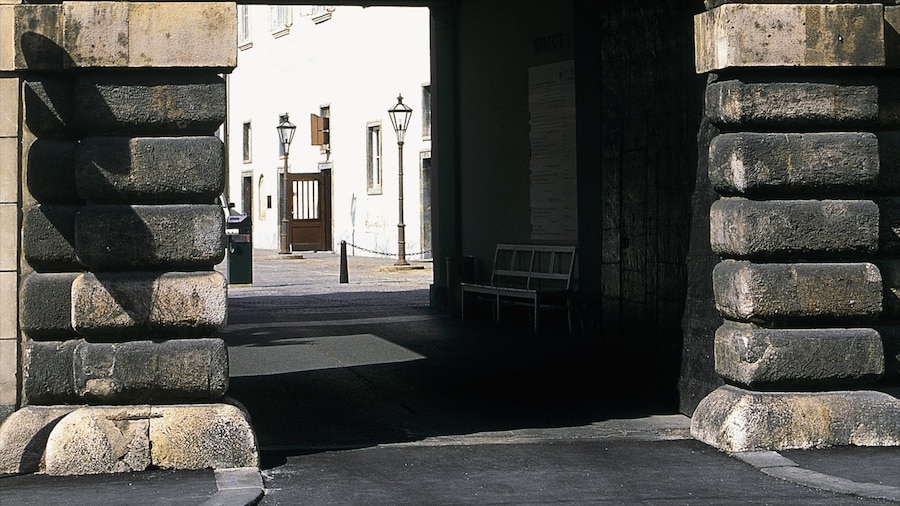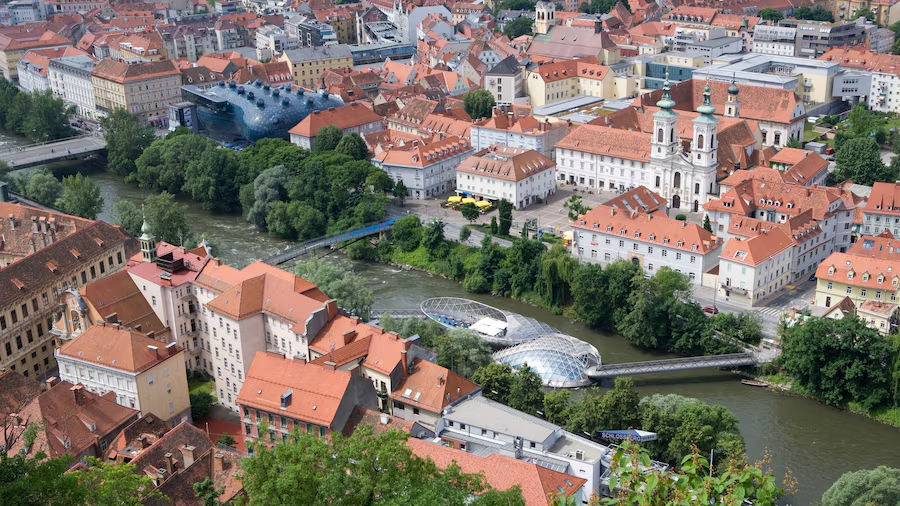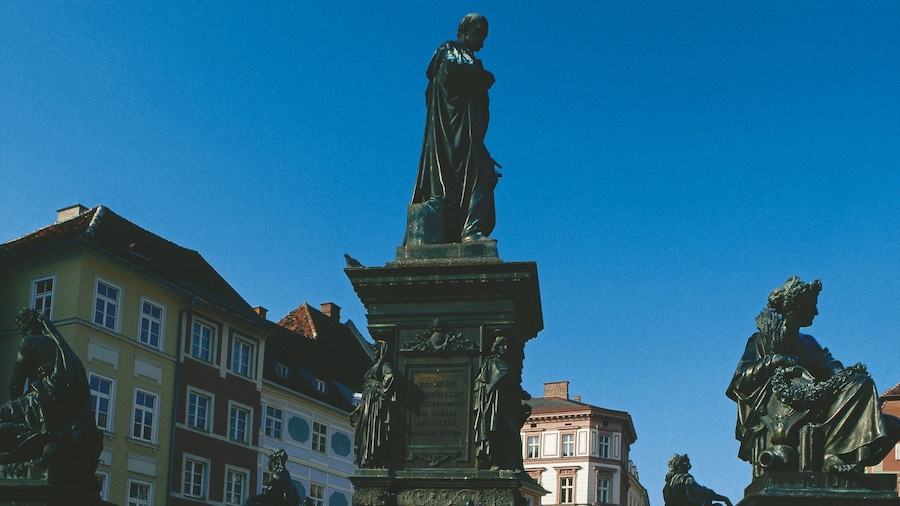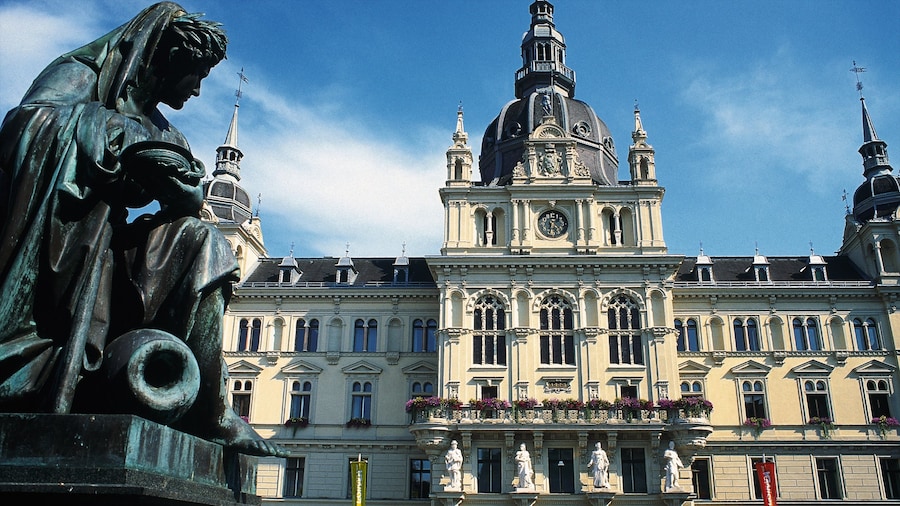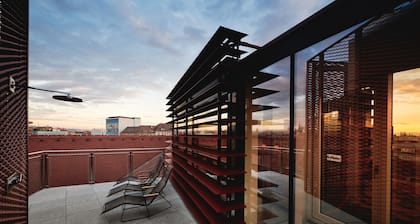Graz Cathedral (Grazer Dom or Dompfarramt) is a stately 15th-century Gothic cathedral in Graz’s historic centre. Visit the cathedral to admire its impressive but minimal exterior, topped with an ornate tower and golden spire. Discover a lavish Baroque interior with magnificent medieval frescos. The cathedral dates back to the mid-15th century when Graz was an imperial city ruled by Emperor Frederick III.
Approach Graz Cathedral after a scenic walk through the grassy lawns of Platz der Menschenrechte, a nearby park. Note the simple Gothic architecture of the cathedral and imagine how its façades would have appeared in late medieval times when the cathedral was covered in its original paintings and frescos. Today, only one fresco has been preserved: Gottesplagenbild (God’s Plagues). This image depicts the string of horrific events the city suffered in 1480. Locusts, war and the Black Death plagued Graz during this time and the fresco was created as a plea to God for mercy.
For a glimpse of the cathedral’s former glory, explore its sumptuous interior, which was refurbished by the Jesuits in the Baroque style in the 17th and 18th centuries. As you enter the cathedral, marvel at its ornate high altar, pulpit and choir stalls. See the superb cathedral organ, which features 5,345 pipes.
Wander over to the two reliquaries on either side of the chancel entrance. These two mid-15th-century chests were originally bridal chests from Mantua, Italy. The Jesuits used them as containers for the bones of Christian martyrs.
Graz Cathedral is open daily and entry is free. Visit the cathedral during a service or concert to hear the magnificent organ being played. The cathedral is located in Graz’s historic centre and looks out onto the tree-lined park of Platz der Menschenrechte, next to the Mausoleum of Ferdinand II. Nearby, find the civic square Freiheitsplatz and KM Künstlerhaus, Hall for Art and Media. Reach Graz Cathedral on foot or by tram.

